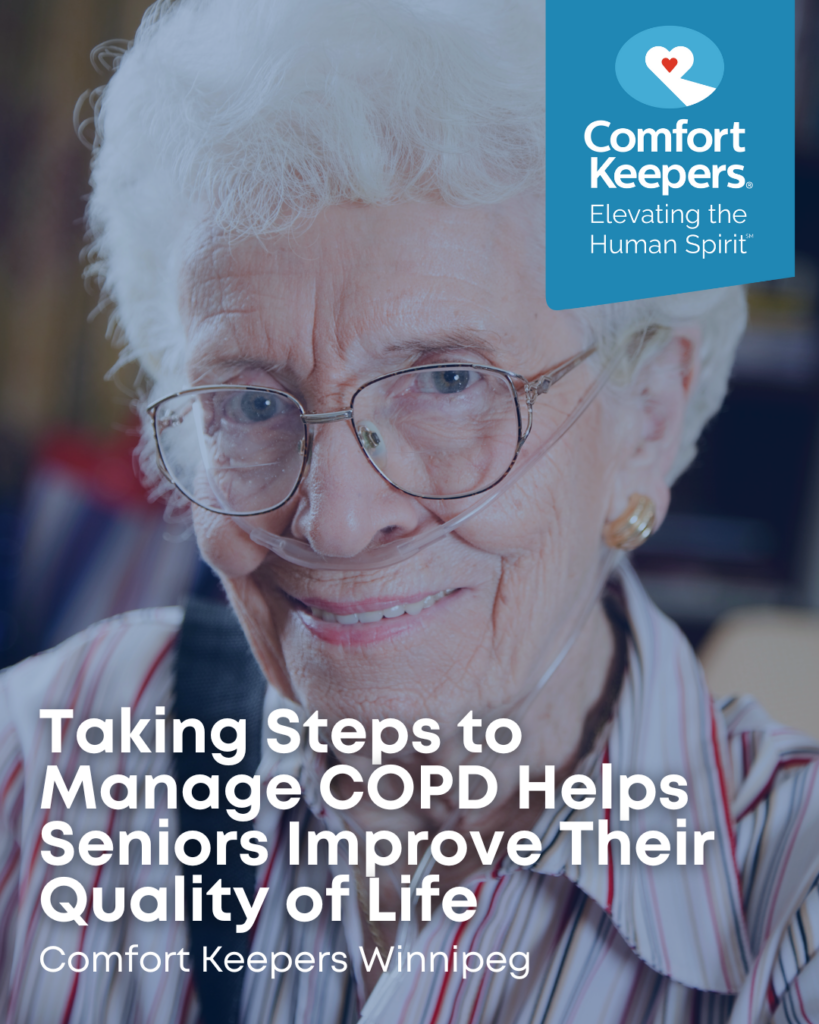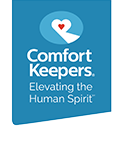Taking Steps to Manage COPD Helps Winnipeg’s Seniors Improve Their Quality of Life
Health | July 12, 2021

What Every Senior in Winnipeg, MB Needs to Know About Managing the Symptoms of COPD
Taking steps to manage COPD is an important factor in one’s care. Chronic obstructive pulmonary disease (COPD) is the fourth leading cause of death in the United States, and it accounts for $1.5 billion in medical spending annually. COPD is costly in every sense of the word.
Up to 3 million Canadians may be living with the disease, many of them still undiagnosed. Those suffering from it experience a reduced quality of life and often have difficulty performing daily activities. Once a person is admitted or readmitted to the hospital for COPD, they usually begin to experience a decline in health. Self-management of COPD is therefore crucial to enable the person to retain as much independence as possible for as long as possible.
Fast Facts: Taking Steps to Manage COPD
Five percent of all deaths globally in 2005 were attributed to COPD, a preventable disease most commonly caused by smoking.
While it may seem contrary to suggest that a person who is easily winded and may have breathing difficulties exercises regularly, studies show that exercise is a key component to managing the disease and preventing hospital admissions and readmissions. In one study of 340 patients who were followed for a year, usual physical activity accounted for a 46% reduced risk of hospital readmissions, which is good news for COPD patients.
Related Article – One-Hour Visits
Taking Steps to Manage COPD
Often, people with COPD become more sedentary since increased shortness of breath may make them less willing to exert themselves. This has a domino effect, causing them to further physically decline, which in turn can cause depression. Depression can further prevent people with COPD from maintaining activity levels, which then increases the rate of physical decline. The overall effect is a greater, faster decline in health and quality of life. Exercise can not only break or inhibit that cycle, but it can also help decrease the COPD patient’s isolation. Exercise can help the person retain mobility so they can leave their homes and engage in social activities.
Taking Steps to Manage COPD in Six Steps:
- Stop smoking
- Be proactive with an annual influenza vaccine
- Work with physicians to ensure an adequate prescription for oxygen
- Take prescriptions as prescribed
- Maintain a healthy diet and weight
- Speak with doctors when physical changes are noticed
While COPD patients may need the intervention of medical professionals to help them treat and manage the disease, taking these small steps can go far in helping them enjoy activities and live life to the fullest.
Comfort Keepers® Winnipeg Offers a Wide Range of Private Home Senior Care Services
For families concerned about the health and well-being of aging loved ones, we can help with homecare services including, Alzheimer’s and dementia care, in-home personal care, respite care, specialized care, in-home nursing, end-of-life care, senior living transition services, and much more!
Comfort Keepers® professional caregivers provide services to ensure safety, health, and happiness without the stress of moving to an assisted living or rehabilitation facility. Individually tailored care plans account for living arrangements, medical issues, physical restrictions, personalities, expectations, and more.
Our Interactive Caregiving™ Approach Enables Top-Notch Homecare
The Interactive Caregiving™ provides a system of care that addresses safety, nutrition, mind, body, and activities of daily living (ADLs). Our compassionate caregivers can provide a personalized home care plan for your loved one, allowing them to enjoy a healthier, safer, and more meaningful retirement at home.
Comfort Keepers® is the Most Trusted Name in Senior Care in Winnipeg
Our in-home caregivers ensure our seniors are physically, socially, and mentally engaged. In addition, we provide options, activities, events, and resources for seniors that might otherwise not be available.
Locally Owned and Operated In-Home Personal Care for Seniors
Our caregivers live and work in the Winnipeg area. We know the area and how to assist our clients using local resources. Comfort Keepers® Winnipeg is here to help you and your loved ones get the best care possible. If you live in Winnipeg and require homecare services for senior personal care and wellbeing, contact Comfort Keepers® at (204)-488-4600.
Accredited Home Care for Seniors in Winnipeg
Comfort Keepers® Winnipeg is accredited with Exemplary Standing with Accreditation Canada. Accreditation is an intensive process in which industry experts examine an organization’s processes, policies, and procedures against quality standards. To achieve accredited status, Comfort Keepers® offices met or exceeded the rigorous standards for Home Care companies, as defined by Accreditation Canada.
References
American College of Sports Medicine. (n.d.). Exercise for persons with chronic obstructive pulmonary disease. Retrieved from http://www.acsm.org/docs/current-comments/exerciseforpersonswithcopd.pdf.
Guarascio, A.J., Ray, S.M., Finch, C.K., and Self, T.H. (June 14, 2013).The clinical and economic burden of chronic obstructive pulmonary disease in the USA. ClinicoEconomics and Outcomes Research, 5, 235-245. doi: 10.2147/CEOR.S34321. Retrieved from http://www.ncbi.nlm.nih.gov/pubmed/23818799.
Morgan, M.D.L. (2003). Preventing hospital admissions for COPD: Role of physical activity. Thorax 58(2), 95-96. doi:10.1136/thorax.58.2.95.
World Health Organization. (October 2013). Chronic obstructive pulmonary disease (COPD). Fact sheet N°315. Retrieved from http://www.who.int/mediacentre/factsheets/fs315/en/.
Individualized Home Care Options
Long-Term Home Care, 24 Hour Home Care & Short Term Care Options Customized for You







